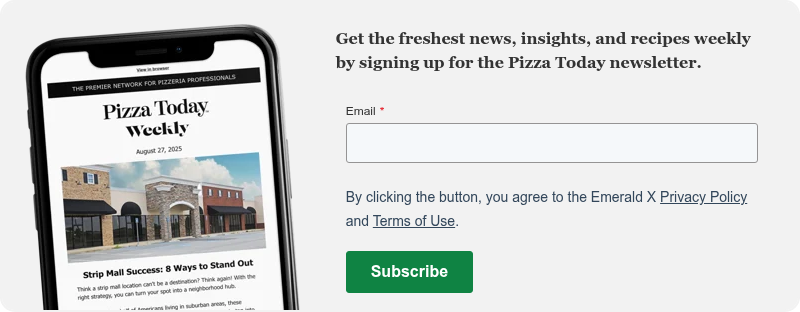When Pizzerias and Prickly Customers Collide
Any pizzeria owner who’s been in the game a while can share a story or two about difficult customers. Such patrons are an unfortunate reality of the hospitality landscape. According to a 2025 survey of 21,000 frontline workers by employee-experience firm Perceptyx, 53 percent of all workers who deal directly with the public reported encountering customers who were verbally abusive, threatening or unruly.
“You don’t get into business to deal with confrontation,” says Bob Negen, head of Michigan-based WhizBang! Retail Training. “But business is inherently messy.”
With consumer expectations high and loyalty dropping – just as eateries struggle to hire and retain staff – the pressure is on restaurant owners to deliver for their customers and staff simultaneously. That’s why knowing how to deal with difficult patrons might be more important than ever.
How to Deal with Challenging or Disruptive Patrons
Reduce the Public Spotlight
While addressing a difficult customer might seem like a one-on-one situation, it rarely is, says Melissa Baker, professor and chair of the Hospitality & Tourism Management Department at the University of Massachusetts Amherst. Staff and other diners likely are watching even marginally disruptive events, and how a situation is (or is not) handled can impact business.
Difficult customers also can derail a fellow diner’s experience and weaken brand perception. Handled incorrectly, these events can make staff feel unsupported and even lead to unfavorable social media posts.
“Make no mistake, an antagonistic customer can affect different constituents in different ways and impact feelings about your restaurant that trickle down to its performance,” Baker says.
To reduce this, she suggests restaurant staff make interactions with difficult customers as private, calm and routine as possible.
“You don’t want to make your service misstep – whether real or simply perceived – a chaotic scene within the restaurant,” Baker says.
Use De-escalation Techniques
Restaurants don’t want to intensify a disruptive situation, which is why de-escalation techniques – tangible strategies designed to lower the temperature of tense interpersonal situations – are so important. Some core tenets of de-escalation include acknowledging the individual’s feelings, using a steady voice and offering choices.
According to Negen, staff’s immediate response to a complaint should be some version of, “Thank you for bringing this to my attention.” Negen says this reply “shows the customer you want to solve their problem.” Thereafter, restaurant staff can pose questions about what’s wrong and, “with an open heart,” ask what can be done to rectify the situation.
“Most people will give you an imminently reasonable response,” Negen says.
Thoughtfully employed de-escalation techniques can diffuse a situation and turn a difficult customer into a more compliant, less troublesome guest.
Mind the Individual
While restaurant leaders can provide staff training about de-escalation strategies and how they might be used with a difficult customer, Baker says the focus should be on delivering personalization, not a canned response. It’s important staff actively listen, read body language and treat each guest as a customer of one, she says.
“If you make something so scripted, an automated apology without authenticity, personalization or reading the customer, it risks falling flat and intensifying a difficult situation,” she says.
Know When to Ask for Help
Kathy Kim, associate professor in the School of Hospitality and Tourism Management at the University of South Carolina, says restaurants should have clearly defined protocols for what staff are empowered to do on their own and when team members should call for a manager. The policy should be known by staff and supported by management.
“Frontline employees often find it hard to confront customers because of the power dynamics between serving the customer and the restaurant’s business objectives, which is why they need to know when they should involve management to mediate a situation,” Kim says.
Recover, Resolve and Follow Up
When confronting difficult customers, restaurants should take earnest actions to rectify a situation and seek recovery, such as supplying a complimentary dessert or inviting the guest in for a do-over, Baker says.
In some cases, however, customers might become particularly uncivil. In these instances, Baker suggests restaurant leaders establish clarity around unacceptable behavior and communicate to customers if something crosses the line. If safety becomes an issue, call law enforcement.
“You certainly want to recover from a failure, but at the same time, customers can’t just do whatever they want,” Baker says.
When a situation is resolved, Baker recommends speaking to observant customers and apologizing for the disruption as well as checking on staff.
“Read cues and take action,” Baker says. “You don’t want one difficult customer to taint the experiences of multiple people.”
DANIEL P. SMITH is a Chicago-based writer who has covered business issues and best practices for a variety of trade publications, newspapers and magazines.



